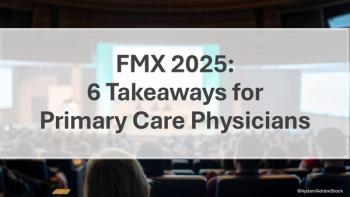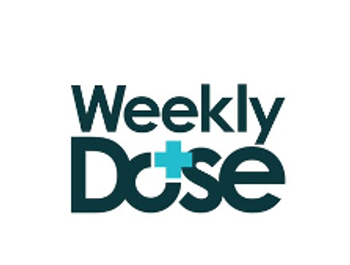
Long Colds: How to Manage Patient Expectation About Duration of the Common Cold
Patients largely underestimate how long a cold should last and the lingering symptoms too often prompt a request for antibiotics. Primary care, please resist!
Respiratory viral infection season will soon be in
In a recent epocrates survey of 1000 adults, patient perceptions of cold durations were surprisingly short: 43% expect that a common cold should last no more than 5 days; men were more likely than women to select this short duration. Further, 35% expect a cold to last up to a week,16% chose up to 10 days—and only 6% expect cold symptoms to last up to 14 days.
Patient expectations influence care-seeking
Half of survey respondents would seek professional medical care if cold symptoms like cough, runny nose, sneezing, and sore throat lasted longer than they expected. Nearly a quarter would seek medical care for symptoms in the first 5 days; those with lower household income and those living in the southern US were more likely to seek care early. An additional 29% reported that they would seek care at days 6 through 10.
Antibiotic prescribing is common
Of patients who sought care for a common cold, nearly half were prescribed an antibiotic to begin immediately, another third received a “delayed” prescription to fill later if symptoms didn’t resolve, and just under 20% did not receive an antibiotic prescription for cold symptoms. When asked about preferences around immediate vs. delayed prescribing, two-thirds were satisfied with a delayed approach, while the other third were dissatisfied and would likely begin taking the prescription immediately if they could.
What motivates antibiotic seeking?
Around half of patients believed that antibiotics were appropriate for a common cold if symptoms lasted longer than they expected and were not improving. Nearly as many responded that antibiotics were appropriate if cold symptoms were severe or very bothersome. Only 16%believed that antibiotics are never appropriate for the common cold. When asked about their reasons for wanting an antibiotic, I assumed that discomfort from symptoms, inability to fulfill daily duties, or concerns about transmitting infections to others would rate high in importance. However, the surprising rationale with the highest importance rating was fear—a fear that the untreated infection could worsen and cause them serious harm. This fear was coupled with a belief that antibiotics would avert that harm.
How to reset patient expectations around unnecessary antibiotics for common colds this season
- Clarify and reassure about the symptom course of viral upper respiratory illness. While common cold symptoms should generally be improving after peaking around 2 to 3 days, up to 10-14 days’ duration is common for cough and nasal symptoms. Explain that changes in mucus from clear to white, yellow, or green is a normal progression, and doesn’t mean that the infection is bacterial. Counsel adults regarding when to seek further care, including if they experience dyspnea, dehydration, fever higher than 100.4oF or fever lasting more than 4 days, lack of improvement after more than 10 days, or worsening of underlying medical conditions.
- Recommend active comfort measures. Convey empathy for the patient’s symptoms. Guide the patient on options for pain relief, on steam inhalation, humidifiers, saline spray, lozenges, fluids, rest, honey for cough, etc. Consult the epocrates evidence-based decision tool on cough management,2 based on guidance from CDC and multiple medical societies.
- Discuss the potential risks and lack of benefit of antibiotics. Reiterate that antibiotics are of zero benefit to viral infections like the common cold, yet pose risk of adverse effects. In addition to side effects like rash, vomiting, yeast infections, diarrhea (including Clostridioides difficile), and allergy, antibiotics may cause drug-drug interactions with existing medications. Moreover, antibiotics for the common cold unnecessarily increase risks for antimicrobial-resistant infections, which have implications for future infection control.
Antimicrobial resistance is a compelling reason to avoid antibiotics
In the survey, learning about potential adverse effects holds potential for reducing patient interest in seeking unnecessary antibiotics. Around 35% responded favorably to learning about antibiotic side effects, and 38% responded to hearing about potential drug-drug interactions. However, more impactful than these was learning that taking antibiotics can lead to resistant bacterial strains that could become difficult to treat in the future—for themselves and others. Overall, 70% responded that hearing about antimicrobial resistance would reduce their desire for an antibiotic. This response was especially important to female respondents as well as Baby Boomers (born 1946-1964) compared with younger generations.
Adressing patient expectations
These conversations between clinicians and patients can be time consuming. At a moment when patients are uncomfortable and fearful, it’s not easy to reverse years of expectations and personal experiences that may have involved unnecessary antibiotic prescriptions on demand. It’s understandable that clinicians factor patient satisfaction in the risk-benefit equation about antibiotic prescriptions. Yet, the decision about antibiotics that a clinician makes for each individual patient has implications for the future of antimicrobial resistance for us all. It was heartening to learn through the recent survey that the majority of patients are open to the shared responsibility to preserve our ability to control infections into the future.
Anne Meneghetti, MD is the physician executive who leads the Medical Information Team at epocrates. After training in internal medicine, pulmonary, and critical care specialties, she worked in healthcare policy before joining the epocrates team in 2006. Her team creates and curates clinical decision support tools for the moments of care.
Newsletter
Enhance your clinical practice with the Patient Care newsletter, offering the latest evidence-based guidelines, diagnostic insights, and treatment strategies for primary care physicians.






























































































































































































































































































